
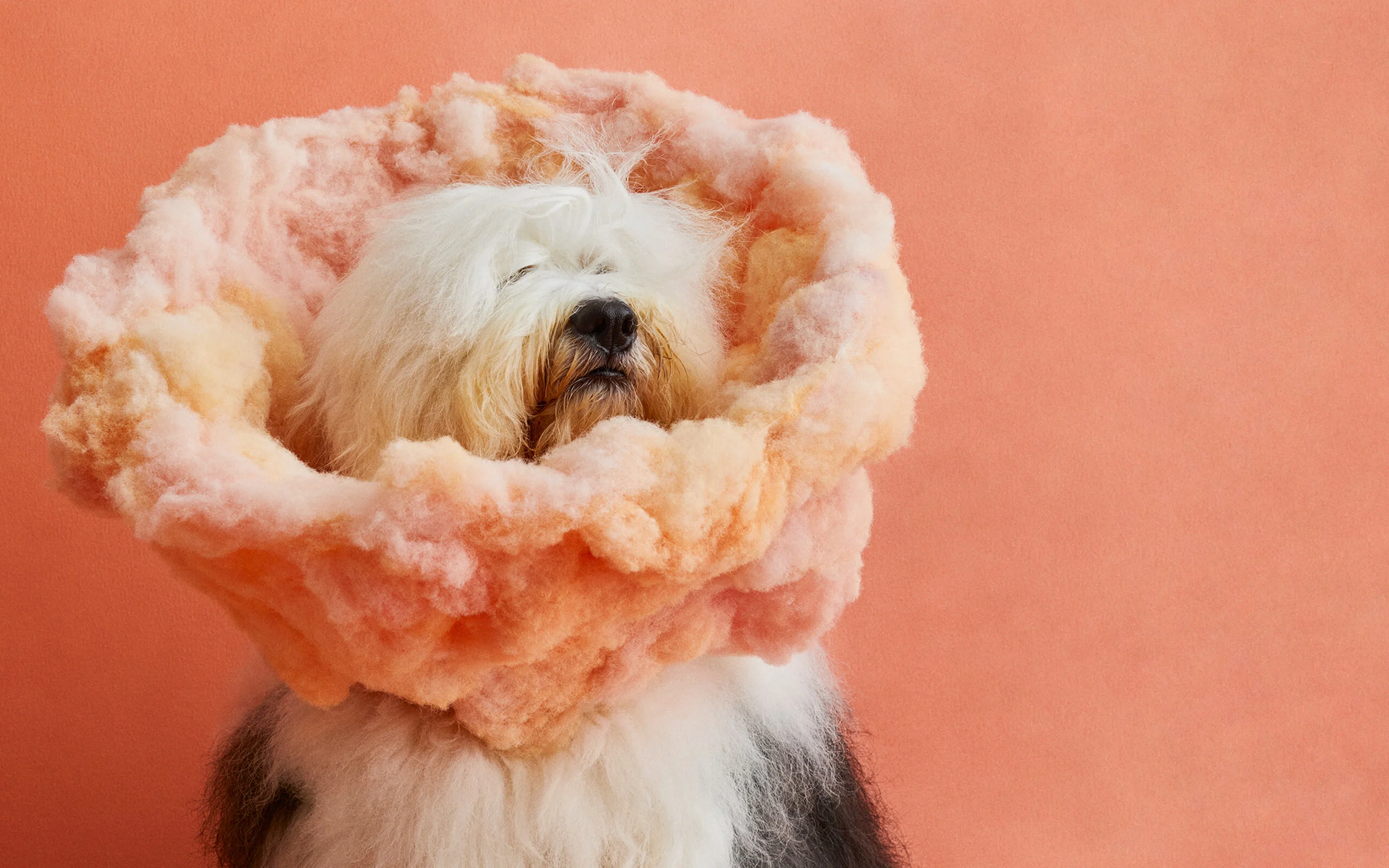
Every few days, Winnie Au goes to the dog park with her studio manager and her intern to hunt for dogs. They’re looking for the most beautiful ones, the ones with the loveliest fur and most eye-catching color. It’s less sinister than it sounds though – Winnie is a photographer, and she’s looking for dogs to include in her project, Cone of Shame.
The series shows a variety of dogs sitting in front of colorful backdrops wearing makeshift pet cones created by prop designer Marie-Yan Morvan. Each dog has been matched to a background and cone that complement the color and texture of its fur, creating abstract photographs unlike any dog photography we’ve ever seen (not that we’re experts).
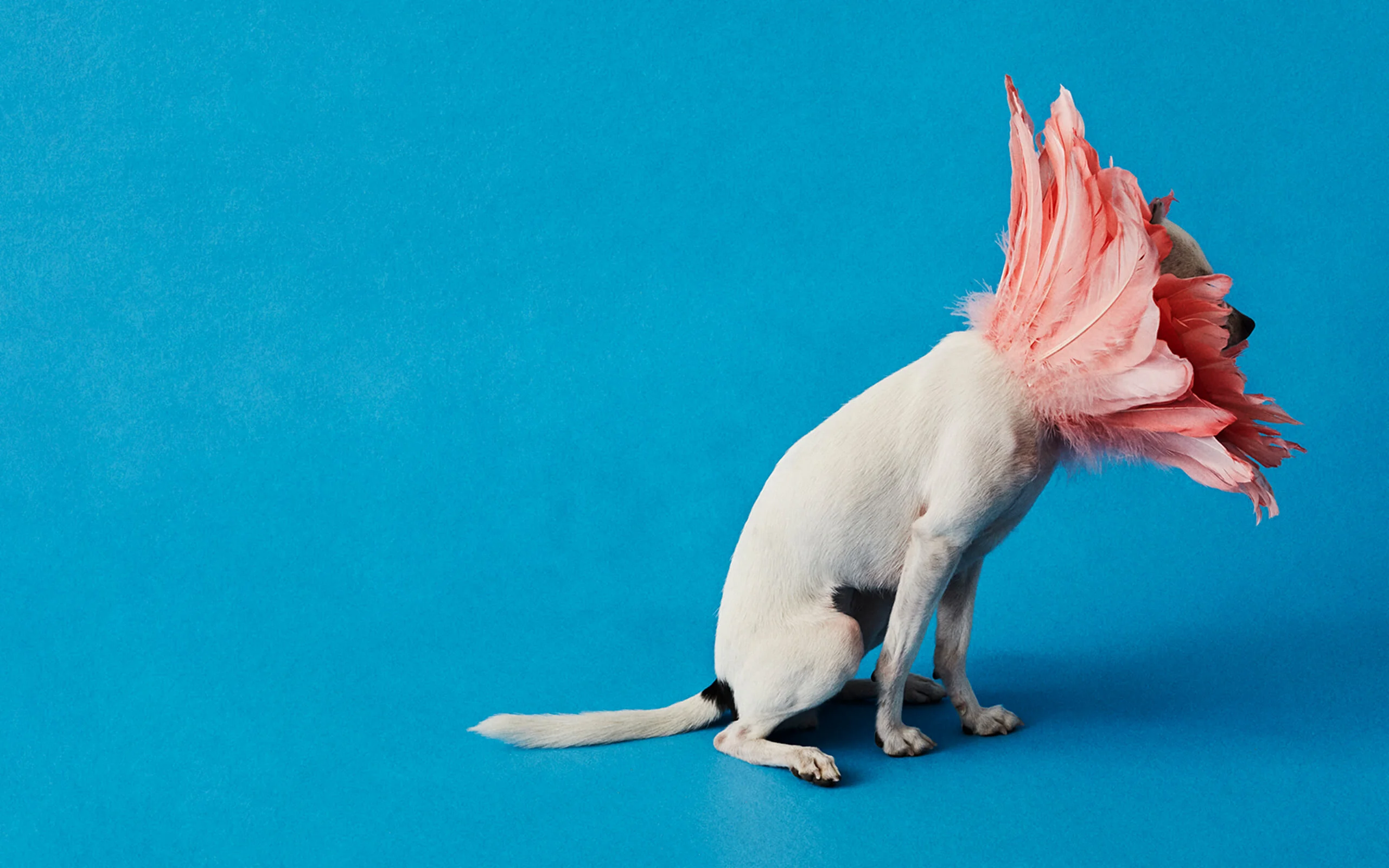
Winnie’s aim is to help animal rescue charities raise funds for dogs who need emergency surgery, and the cone is a symbol for these needs. “Every time you see a dog in a cone, it’s a very strong image,” Winnie says. “It’s either really sad or funny, and I thought it was something that I needed to explore more.” She took the idea of the cone and made it something more beautiful, more interesting and more hopeful. “I wanted to use it as a tool to elevate the dogs,” she says.
Winnie is very keen to emphasise all the dogs are equally cute, but she wants her project to be deeper than that. “Animal photography can be really cheesy,” Winnie says, so she wanted the series to be more abstract. “It was about looking at dogs in a different way, realising that we don’t always have to see the dog’s face. It can just be the shapes they make with their different body types.”
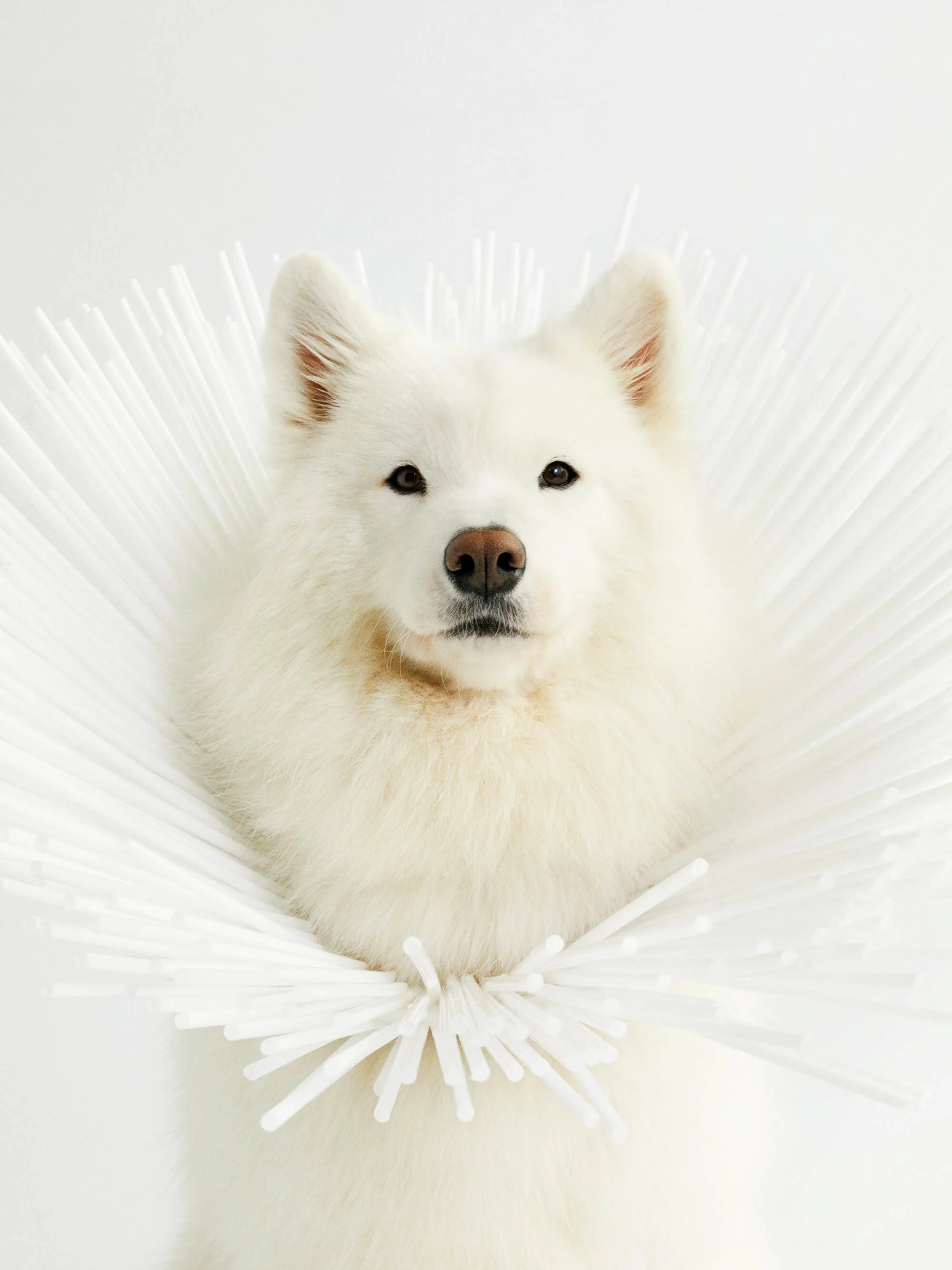
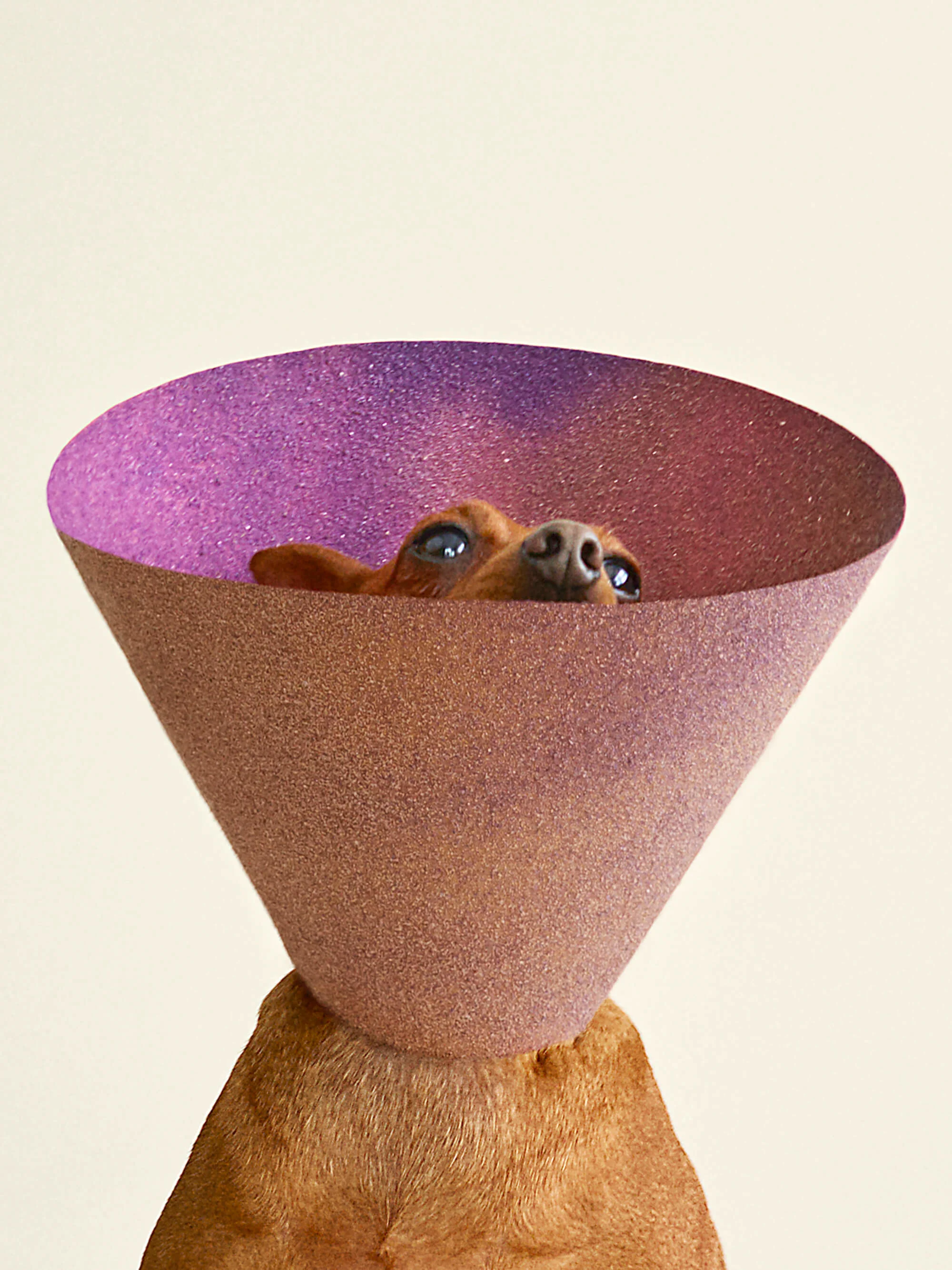
I take portraits of animals that are more considered, rather than just a snapshot of a pet.
In one impressively symmetrical image, a beautiful Samoyed sits gracefully, staring directly into the camera, its white cone blending into the backdrop, as if it’s posing for a royal portrait. In another, an excitable Chihuahua fumbles and stretches, desperate to peek over the top of its purple, galactic cone. Winnie has an astonishing ability to bring out each dog’s personality, and the results range from funny to captivating.
Winnie studied advertising but soon pivoted into photography, and began building a portfolio of anything and everything. There was a dog living in her apartment building, and she photographed it against some crumbling wallpaper, sending the image to a magazine. “It got picked up, and it established this approach for me of taking portraits of animals that are a little more considered, rather than just a snapshot of a pet.”
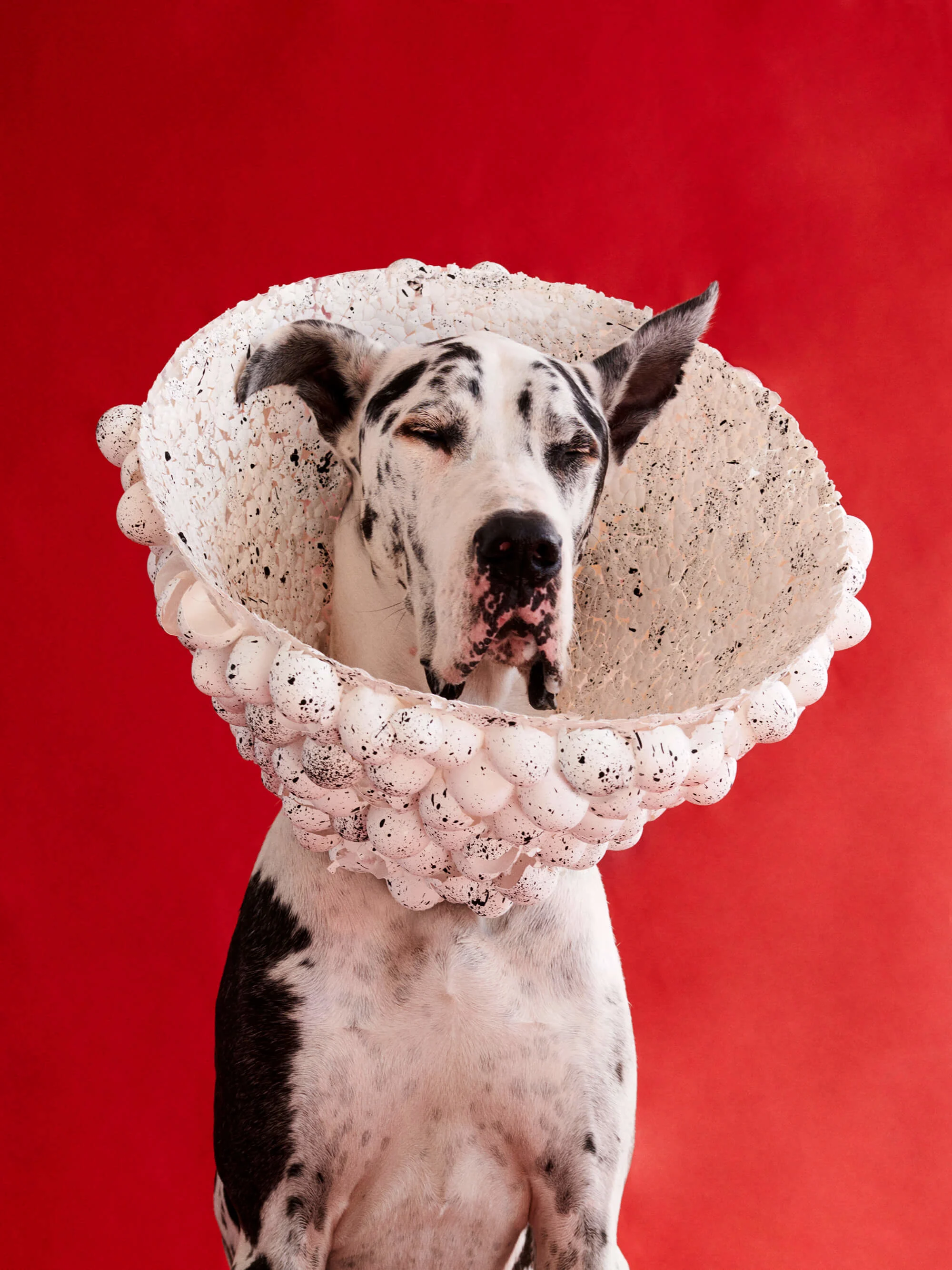
She feels like photographing dogs is similar to photographing babies or children. “There’s a lack of control,” she says. “You’re working with a subject that has a limited time frame and you can’t really tell them what to do.” She’s worked with professional dogs from LA that have acted in movies, but even then problems can arise. “Even the most highly-trained dog is still an animal, so you can try to tell it what to do, but in the end it’s more about tricking them into doing something,” she says.


Nowadays you’re not just the family dog that hangs out, you’re part of the family.
Unsurprisingly, there are some tips and tricks she’s picked up along the way, although they are not always rocket science. Some owners like their dogs to be panting in a photo, as they think it looks like a smile. “If you want them panting, you just take them outside and run around a lot so they get really hot, and then just bring them in and take the photo.” And there you have it – a grinning pup.
Winnie has a few theories as to why the popularity of pet photography is exploding right now. Her dad grew up on a farm in rural China, and although they had dogs, they were rarely allowed inside. Winnie’s own childhood family dog lived outside too. “So many of our pets live inside now, with their own bed, or even in our beds,” she says. “There’s been this transition. You’re not just the family dog that hangs out, you’re part of the family.”
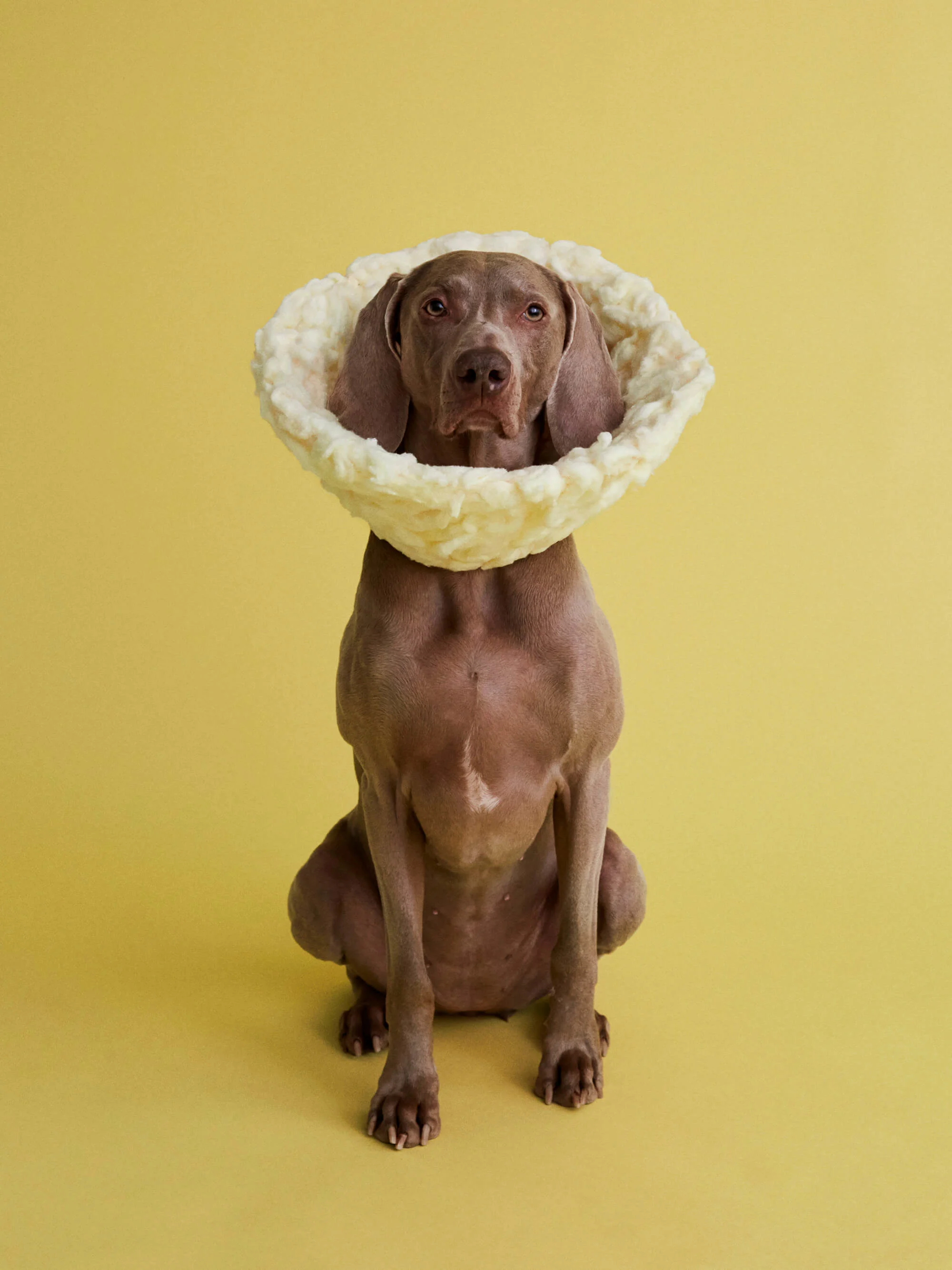
As people have children later in life, Winnie also feels dogs can play the role of surrogate babies for some people. But whatever the reason, it’s working out well for Winnie. She loves capturing the dogs, and the fact she’s helping people preserve the memory of their loving pets makes it even sweeter.
“The sad thing about dogs is that they die so quickly. It’s very meaningful to have made something special for the owner.”
Words by Alex Kahl.

